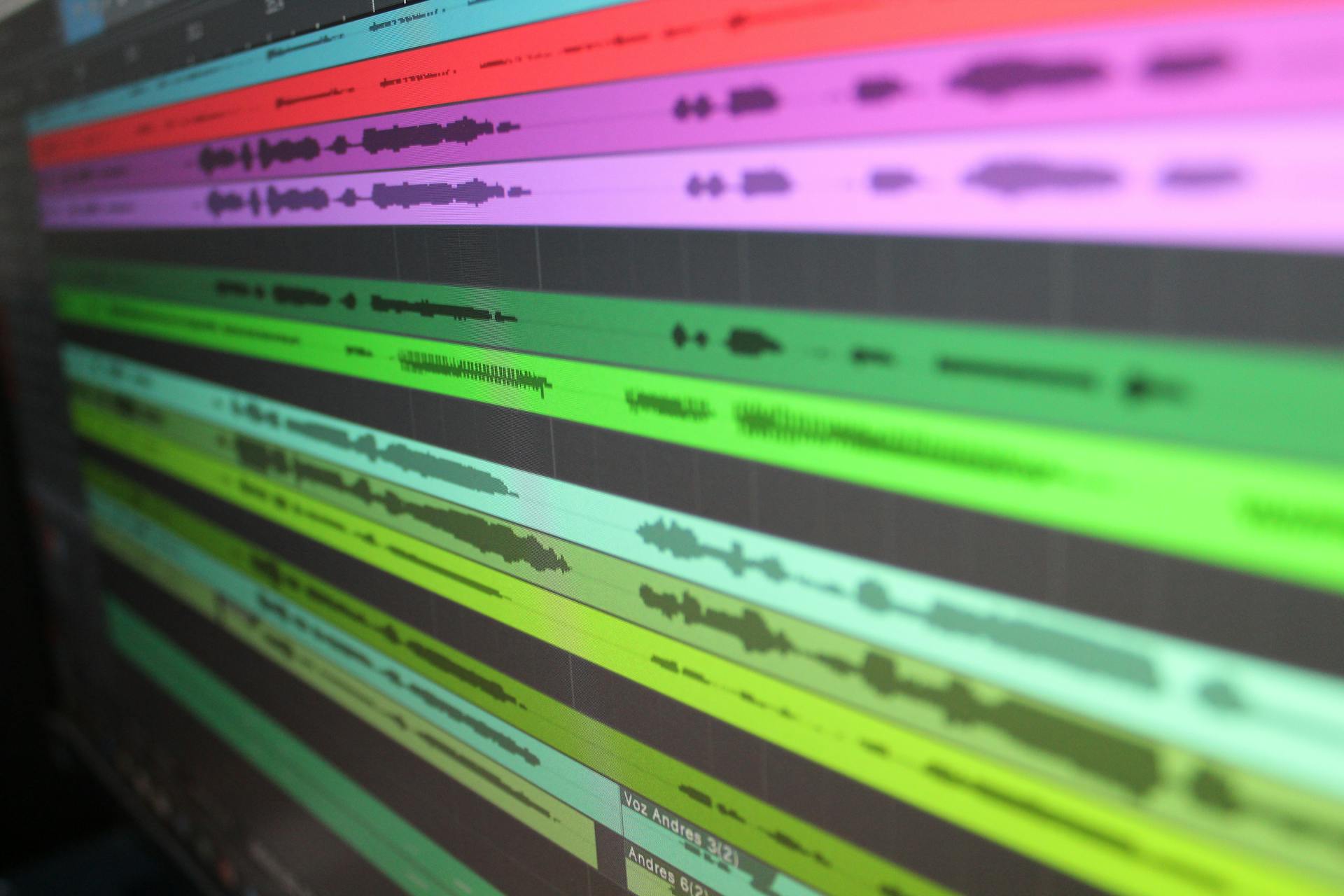
Transfer learning and fine-tuning are two popular techniques in deep learning that help us leverage pre-trained models for new tasks. Transfer learning involves using a pre-trained model as a starting point for a new task, often by replacing the last layer with a new one.
Fine-tuning takes it a step further by training the entire pre-trained model on the new task, but with a smaller learning rate to prevent overwriting the learned features. This process can be time-consuming and requires careful tuning of the learning rate.
In contrast, transfer learning can be a more efficient and effective approach, especially when working with smaller datasets. By leveraging the knowledge gained from the pre-trained model, we can often achieve state-of-the-art results with minimal additional training data.
For more insights, see: Fine-tuning Huggingface Model with Custom Dataset
What is Transfer Learning?
Transfer learning is a powerful technique in machine learning that allows us to reuse a model trained on one task for another, related task. By leveraging its already-learned features, we can save time and resources.
A pre-trained model learns to generalize by identifying underlying patterns and features in its training data, allowing it to correctly interpret new input over time. For example, a large image model might learn to detect whether an image contains a bird after analyzing thousands of images of birds.
Transfer learning is particularly useful when we need to adapt a pre-trained model to a specific niche use case. The model might recognize a bird, but struggle to accurately distinguish among species, making it less effective for tasks like identifying bird species.
Fine-tuning, which we'll cover in the next section, can be used to adapt a pre-trained model to a specific task, but transfer learning is the broader concept of reusing a model trained on one task for another related task.
Here are some key differences between transfer learning and fine-tuning:
- Transfer learning: Reuses a model trained on one task for another, related task by leveraging its already-learned features.
- Fine-tuning: Tweaks or adjusts the pre-trained model’s settings to improve performance on a specific new task.
By understanding the basics of transfer learning, we can unlock the full potential of pre-trained models and adapt them to a wide range of tasks and applications.
Training Process
The training process is a crucial step in both transfer learning and fine-tuning. Transfer learning only retrain a few layers of the model with the new dataset, while keeping most of the model unchanged.
This approach helps to preserve the knowledge gained from the pre-trained model and adapt it to the new task. By retraining only a few layers, you can quickly get started with a decent level of accuracy.
There are two main approaches to training a model: Transfer Learning and Fine-Tuning. Here's a brief comparison:
Fine-tuning, on the other hand, retrain a larger part or the entire model on the new dataset to help it learn more specific features. This approach can be more time-consuming, but it can also lead to better results.
Dataset Size
When working with machine learning models, the size of your dataset can greatly impact the training process. Transfer learning is best used with small datasets, making it impractical to train a model from scratch.
A small dataset can be overwhelming to work with, but transfer learning can be a lifesaver. This method allows you to leverage pre-trained models and fine-tune them for your specific task.
Fine-tuning, on the other hand, can work with larger datasets, but it's especially helpful when the new dataset is smaller than the original one used to train the model.
Here's a quick rundown of the dataset size considerations:
- Transfer Learning: Best when you have a small dataset.
- Fine-tuning: Works with larger datasets, especially helpful with smaller new datasets.
Training Process
Training Process is a crucial step in developing a model that can accurately classify images. This process involves adapting the model to a new dataset.
There are two main approaches to training a model: Transfer Learning and Fine-Tuning. Transfer Learning is a technique where only a few layers of the model are retrained with the new dataset, while keeping most of the model unchanged.
Fine-Tuning, on the other hand, involves retraining a larger part or the entire model on the new dataset to help it learn more specific features.
On a similar theme: Huggingface Fine Tuning Llm
Here are the key differences between Transfer Learning and Fine-Tuning:
- Transfer Learning: Retrains a few layers of the model with the new dataset.
- Fine-Tuning: Retrains a larger part or the entire model on the new dataset.
The choice between Transfer Learning and Fine-Tuning depends on the complexity of the new dataset and the level of specificity required.
Model Initialization
In the context of fine-tuning a pre-trained model, it's essential to initialize the model parameters effectively. We use ResNet-18 as the source model, which was pre-trained on the ImageNet dataset.
The pretrained source model instance contains two member variables: features and output. The former contains all layers of the model except the output layer.
To facilitate the fine-tuning of model parameters of all layers but the output layer, we can initialize the parameters of the target model instance finetune_net to the model parameters of the corresponding layers from the source model.
Model parameters before the output layer of the target model instance finetune_net are initialized to model parameters of the corresponding layers from the source model. Since these model parameters were obtained via pretraining on ImageNet, they are effective.
A learning rate of 10 times the base learning rate is used to iterate the model parameters in the output layer, which are randomly initialized. This is because model parameters in the output layer generally require a larger learning rate to be learned from scratch.
Explore further: Hyperparameter Machine Learning
Reading the Dataset
The hot dog dataset is taken from online images, consisting of 1400 positive-class images containing hot dogs and as many negative-class images containing other foods.
1000 images of both classes are used for training, with the rest reserved for testing. This is a common practice in machine learning to ensure the model generalizes well to unseen data.
The dataset is organized into two folders: hotdog/train and hotdog/test. Both folders have hotdog and not-hotdog subfolders, containing images of the corresponding class.
The first 8 positive examples and the last 8 negative images show that the images vary in size and aspect ratio. This makes it challenging to process the images uniformly.
During training, a random area of random size and random aspect ratio is cropped from the image, then scaled to a 224 x 224 input image. This helps the model learn to focus on the most relevant features.
During testing, the image is scaled to 256 pixels in both height and width, then a central 224 x 224 area is cropped as input. This ensures consistent input sizes for the model.
For the three RGB color channels, the mean value of each channel is subtracted from each value, then divided by the standard deviation of that channel. This standardization helps the model learn more robust features.
Benefits and Risks
Fine-tuning a model has both benefits and risks. One of the key benefits is cost and resource efficiency, as it's generally much faster and more cost-effective than training a model from scratch.
Fine-tuning can also lead to better performance on narrow use cases, especially in scenarios where task-specific data is limited. This is because fine-tuned pretrained models can achieve high performance in specialized use cases.
The democratization of machine learning capabilities is another benefit of fine-tuning, as it makes advanced machine learning models more accessible to individuals and organizations with limited compute and financial resources.
However, there are also risks and challenges associated with fine-tuning. Overfitting is a common problem that can occur when working with small data sets, causing a machine learning model to learn irrelevant features.
Fine-tuning also requires balancing new and previously learned knowledge, which can be tricky. If the new data differs significantly from the original data, the fine-tuned model may forget the general knowledge acquired during pretraining.
Here are some strategies to help mitigate these limitations:
- Data augmentation
- Regularization
- Incorporating dropout layers
What Are the Risks and Benefits of?
Fine-tuning a model can be a game-changer for machine learning projects, but it's not without its risks and benefits. Fine-tuning a pretrained model is generally much faster and more cost-effective than training a model from scratch, leading to lower costs and less onerous infrastructure requirements.
One of the key benefits of fine-tuning is that it can achieve high performance in specialized use cases, especially when task-specific data is limited. This is especially useful in scenarios where you need to adapt a model to a new task without a lot of data.
Fine-tuning also democratizes machine learning capabilities, making advanced models more accessible to individuals and organizations with limited compute and financial resources. Even smaller organizations can adapt pretrained models for a range of applications.
However, fine-tuning also comes with risks, including overfitting, where a model learns irrelevant features from the training data. Overfitting can be mitigated with strategies like data augmentation, regularization, and incorporating dropout layers.
A unique perspective: Fine-tuning (deep Learning)

Another risk is balancing new and previously learned knowledge, where the fine-tuned model may forget the general knowledge acquired during pretraining. Freezing too many layers can prevent the model from adapting well to the new task, while freezing too few risks losing important pre-learned features.
Here are some of the key benefits and risks of fine-tuning:
- Cost and resource efficiency
- Better performance on narrow use cases
- Democratization of machine learning capabilities
- Overfitting
- Balancing new and previously learned knowledge
- Reliance on pretrained models
Speed and Cost
Transfer Learning is a faster and less expensive approach, retaining only a small portion of the model.
Fine-tuning, on the other hand, requires retraining more layers of the model, making it a slower and more expensive process.
This difference in speed and cost is a crucial consideration when deciding which approach to take.
Here's a comparison of the two methods:
- Transfer Learning: Faster and less expensive
- Fine-tuning: Slower and more expensive
Flexibility
Flexibility is a key aspect of machine learning models, and it's essential to understand how they adapt to new tasks. Transfer Learning works best when the new task is somewhat related to the original task the model was trained on.

One of the most significant advantages of Fine-tuning is its flexibility, allowing the model to be adapted for a wider range of tasks, even if they are not closely related. This makes it a valuable tool for many applications.
There are two main approaches to achieving flexibility in machine learning models: Transfer Learning and Fine-tuning.
Frequently Asked Questions
What is the primary difference between feature extraction transfer learning and fine-tuning transfer learning?
The primary difference between feature extraction and fine-tuning transfer learning is that feature extraction freezes pre-trained layers, while fine-tuning unfreezes and re-trains some of them. This distinction affects how new layers are trained and integrated with the pre-trained model.
Sources
- https://www.linkedin.com/pulse/transfer-learning-vs-fine-tuning-top-10-differences-priyanka-yadav-pmyrc
- http://d2l.ai/chapter_computer-vision/fine-tuning.html
- https://www.techtarget.com/searchenterpriseai/definition/fine-tuning
- https://deeplizard.com/learn/video/5T-iXNNiwIs
- https://medium.com/munchy-bytes/transfer-learning-and-fine-tuning-363b3f33655d
Featured Images: pexels.com


